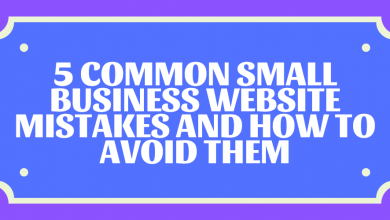Tips for Virtual Meetings and Webinars in eLearning

Many of us now participate in virtual meetings daily – often far more frequently than we would prefer. Virtual meetings are frequently scheduled a week in advance or crammed into the last available slot on our calendars an hour before they start.
Virtual meetings aren’t new to some of us. Thousands of employees work remotely or at different office locations outside the headquarters; therefore, virtual meetings have become essential for their communication strategy. We hope this blog might provide some insight into the value of virtual meetings, whether you’ve been using them for years or are a newbie eager to learn more.
What is the Definition of a Virtual Meeting?
A virtual meeting occurs when people from different locations utilize technology to achieve a common purpose simultaneously. However, it should not be confused with virtual events or webinars. Virtual meetings are easier to organize and require less preparation time than virtual events. They differ from webinars in that they have fewer participants and foster networking and problem-solving. Some critical distinctions between virtual meetings and virtual events are listed below.
A virtual event, like an in-person event, usually consists of several sessions. These allow attendees to tailor their event experiences to their personal preferences. For virtual meetings, however, there is just one session for all attendees.
While a virtual meeting may have a leader or moderator, all attendees are usually active in the conversation in some way. On the other hand, a virtual event frequently includes workshops or keynote speakers who speak to the group in a one-sided interaction.
Virtual events, like their physical counterparts, necessitate a great deal of preparation and organizing. Keynote speakers must be booked, sessions must be planned, and participant registrations must be collected. Virtual meetings are usually easier to schedule and can be done in a shorter amount of time.
When Should You Hold a Virtual Meeting?
Here are some circumstances in which hosting a virtual meeting is advantageous:
Members of a Remote Team
We’re used to working in groups with colleagues who are stationed remotely or in different offices. It would be tough to connect successfully with these employees without the use of virtual meetings. The ability to chat to faraway peers “face-to-face” virtually provides for real-time communication and problem-solving that email does not allow for.
External Customers or Clients Meetings
Traveling to a prospective client’s office or inviting them to your office for a meeting isn’t always practical. A virtual meeting is a time-saving and cost-effective approach to plan an impromptu session to answer queries or discuss logistics.
Expenses for Travel
Flying in a teammate for a quick meeting or making travel arrangements for a customer to ask a few questions does not always make financial sense. Virtual meetings are a cost-effective solution for your company to save money and cut down on travel expenses.
The Only Alternative Is a Virtual Meeting
There are occasions, though, when virtual is the only alternative. You can be equipped for any situation that prevents in-person meetings by putting up the equipment to organize virtual meetings. In times of crisis, virtual meetings allow businesses to continue working.
Selecting the Best Virtual Meeting Platform
There are numerous choices for hosting virtual meetings in the marketplace. The correct platform, according to PMI, is the key to success. When evaluating virtual meeting software, consider the following questions:
- Is it possible to videotape your meetings? If any invited guests were unable to join the conference in real-time or if attendees want to review the recording afterward, this is a handy tool.
- Is it possible to chat with it? Many online meeting solutions allow attendees to enter real-time comments and queries. This is a valuable tool when you have a huge meeting and don’t want numerous people interrupting you with questions.
- Is it possible to sync meeting invites with your calendar? Look for a program that will sync meeting invitations with your calendar. This will save you a lot of time and ensure that your participants don’t miss or forget about your meeting.
- Is it possible to customize meeting rooms? Some online meeting software lets you customize your “meeting rooms” to match your company’s branding and tone. If your online meeting is with a potential client and wants to give them a feel of your brand image, this can be helpful.
- Are there any elements that encourage participation? Quizzes, games, and applications may all be incorporated into your meetings using online meeting software. To ensure attendee engagement during the meeting, these extra features are a tremendous help.
- Do you have the ability to edit documents in real-time? Finding a meeting tool that allows you to modify papers with your team and interact in real-time can be highly beneficial.
Using Event Management Technology to Integrate
Once you’ve decided on a virtual meeting provider, you’ll also need event technology software to help you manage your meetings schedule. With the stroke of a button, you’ll be able to capture critical meeting data, track attendees, and send post-meeting emails. When you combine your virtual meeting tool with event technology software, your virtual meetings will go as smoothly as in-person meetings.
A comprehensive agenda and a plan to properly follow it are essential for a virtual meeting, just as they are for any in-person meeting. It’s time to host your virtual meeting after the schedule has been submitted and the meeting time has been confirmed. Here are some tips for hosting a productive and entertaining virtual meeting.
Tips for Hosting Engaging, Efficient Virtual Meetings
Etiquette for Virtual Meetings
We’ve all seen conference call skits on TV: numerous individuals interrupting each other at the same time, dogs barking in the background, and people eating loud, crunchy food. While it’s interesting to see, it’s not so much fun to go through. Fortunately, you may avoid these mishaps by implementing virtual meeting etiquette.
Decide How Attendees at the Meeting Should Ask Questions
Will you have a moderator who will answer participants’ inquiries via email? If participants wish to offer a question, will they have to raise their hands? To avoid interruptions in conversation, decide this ahead of time.
Make Time for Regular “In-Person” Conversations
All of us miss having a freewheeling conversation to interact, especially during times of social disconnection. Make sure to leave time at the start or finish of your virtual meeting to talk with your participants. Taking a few minutes to naturally involve everyone makes them feel more at ease, leading to higher productivity.
Moderate Your Meetings
Throughout the meeting, call on individuals at random to ensure that they are paying attention. If you observe that someone is talking on their phone or is being too quiet, invite them to contribute to the conversation. This guarantees that everyone has a say and is aware of what is going on.
Take Advantage of Mobile Event Apps
While a mobile app may not be appropriate for small team meetings, it can help keep attendees engaged at larger internal gatherings. Accept and capitalize on the reality that people are constantly on their phones. Create a poll or a survey to send out at various points during the meeting, or use the mobile app to encourage live Q&A sessions. These diverse aspects keep participants focused on the task at hand and offer a fun element.
Conclusion
Being excited and driven is the ideal approach to making your virtual meetings exciting and engaging. Virtual meetings aren’t going away anytime soon, even if they don’t make up 100% of any meetings program. Virtual meetings are an essential aspect of any meeting program, and many firms rely on them. Take advantage of all the advantages of virtual meetings and utilize them to develop the ideal meeting schedule for your company.





